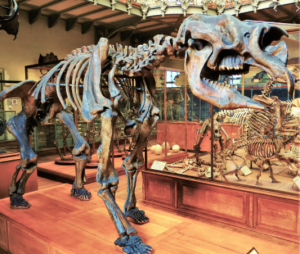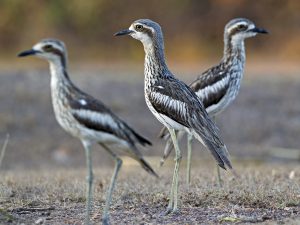Podcast: Play in new window | Download (Duration: 16:34 — 14.0MB)
Subscribe: | More
Thanks for this week’s topic suggestion from Jideobi! This week we’re going to learn all about koalas and some of their strange friends!
The Blood on the Rocks podcast (not for kids) where you can hear a segment by me in the WWI megasode!
An unlocked Patreon episode about wombats
So cuddly, little koala:
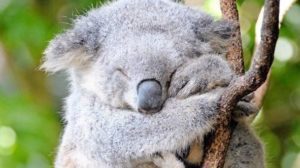
I am dying of cute y’all:
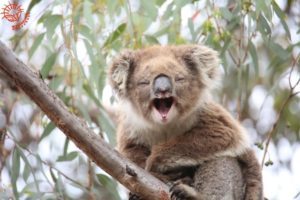
I have actually died. I am ded because this mama koala is feeding her baby a leaf:
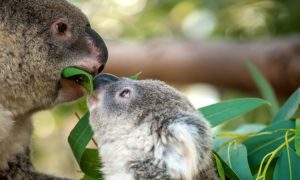
I came back to life but then I died again because of this monito del monte:
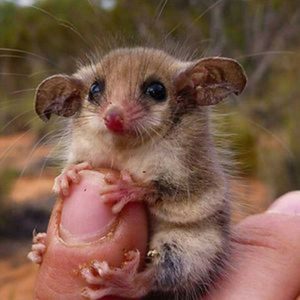
Show transcript:
Welcome to Strange Animals Podcast. I’m your host, Kate Shaw.
It’s another listener suggestion week! But before we get started, a quick shout-out to the podcast Blood on the Rocks. I was one of about a dozen podcasters who participated in their recent epic World War I megasode. It’s not a podcast for kids since it covers dark topics like true crime and the more gruesome bits of history, but if you are a grown-up type person who finds that sort of thing interesting, I’ll put a link in the show notes so you can check it out. My part of the show was a short segment about the animals of WWI. I also released a different version of the segment as a patreon bonus episode earlier this month.
Anyway, let’s start off this week’s episode about koalas. Thanks to Jideobi, who suggested we learn about the koala. I can’t believe I haven’t covered koalas on the podcast before. They’re such amazing, weird animals.
Many people call the koala a koala bear, but it’s not related to bears. The koala is a marsupial—you know, where the babies stay in their mama’s pouch. It’s most closely related to the wombat, and I was going to talk about the wombat in this episode until I remembered I had a whole Patreon episode about the wombat. I’ve unlocked it so anyone can listen to it. There’s a link in the show notes and you can click on it and listen in your browser, no login needed.
The koala lives near the coasts of eastern and southern Australia in eucalyptus trees. It’s gray, gray-brown, or brown in color, with no tail, short floofy ears, a flat face with a big black nose, and long claws that help it cling to tree trunks. You may already know all this about the koala, and you probably know that almost all it eats is the leaves of the eucalyptus tree. But there is so much more to learn about the koala.
For one thing, its diet. Eucalyptus trees are mostly native to Australia, although people in other parts of the world grow them as ornamentals, although they need warm climates to survive. Koalas eat the leaves of many different types of eucalyptus trees, but they prefer about 30 species, typically ones whose leaves contain higher levels of protein. But eucalyptus leaves contain toxins that make other animals avoid them—toxins that can poison even large animals like horses and cattle if they eat any. Even handling eucalyptus leaves with your bare hands can irritate your skin.
The koala’s liver produces a type of protein called cytochrome P450, which breaks down the toxins and stops them from making the koala sick. Still, researchers have observed that the koala does avoid certain leaves or parts of leaves that contain higher concentrations of the toxins.
Researchers recently sequenced the koala genome, which gives us new genetic understanding of its biology. One thing the genome reveals is the koala genes associated with taste receptors. For most mammals, a bitter taste is a warning that something you’re eating might be toxic. That’s why things like coffee and strong tea are acquired tastes, because they contain compounds that can make the drink taste bitter, especially if it’s not prepared properly. That’s why I put a whole bunch of sugar and milk into my coffee. The koala has more bitter taste receptors than almost any other animal studied, which means it can probably taste the level of toxins in every leaf. This helps it choose the least toxic leaves. Interestingly, the koala also has taste receptors for sweetness and for umami, which is the flavor mostly associated with meat. So it’s likely that the ancestors of the koala had a broad diet that probably included fruit and meat.
Because eucalyptus leaves aren’t all that high in protein, the koala has a low metabolic rate and spends a lot of its time asleep. It sleeps as much as eighteen to twenty hours a day, curled up in the fork of a tree. That sounds so nice. It’s mostly active at night. It spends almost all its time in trees, but when it wants to move to a different tree, it just climbs down and walks to a tree it likes better. Sometimes the leaves it eats don’t give it quite enough moisture, so it will climb down from its tree to drink from a stream.
The koala eats a lot of leaves, something like two and a half pounds of them a day, or almost 1.2 kilograms, and it even has cheek pouches where it can store leaves to eat later. Its digestive system is really long, which helps it extract as many nutrients from its food as possible.
If you’re not from Australia, you may not know that eucalyptus leaves have a pungent smell. The leaves contain eucalyptus oil, which has a number of health benefits for humans if used properly in things like cough drops, ointments, or mouthwashes. And since the koala eats eucalyptus leaves all day every day, guess what it smells like. That’s right. The koala smells like a cough drop.
Naturally, a koala needs access to a lot of trees in order to get enough to eat, about 100 trees per koala. These days it’s threatened by habitat loss as forests in Australia are chopped down to build houses or create farmland. Another threat to the koala is being hit by cars while wandering around looking for a new tree to climb. Recently, the Queensland Dept of Transport and Main Roads started building special tunnels under roads and ledges across roads designed specifically to allow koalas to cross safely. A tracking study to see if koalas are using the new structures show that yes, they are. In fact, even though the koala has a small brain in comparison to its body size, it’s a pretty smart animal in some ways. It started using the tunnels and ledges as soon as they were installed.
Another threat to the koala is a bacterial disease called koala chlamydia. It can cause blindness, pneumonia, and infections that stop koalas from being able to have babies. A newly developed vaccine for the disease has proven effective, but the problem is getting the vaccine to wild animals that live way up in trees. Currently, anytime someone brings an injured koala to a zoo hospital, veterinarians make sure to vaccinate it while it’s being treated for its injuries.
The koala has weird feet that look and act a lot like primate hands. It has five digits on its forefeet, three fingers and what are basically two thumbs—two opposable digits that help it grasp tree limbs more securely. Its hind feet have four toes, two regular toes, one opposable thumb toe with no claw, and one toe that is made up of two toes that are fused together, although it still has two claws at the end. It mainly uses the fused toes to groom its fur. It also has friction ridges on its toe pads, otherwise known as fingerprints, that are unique to each individual like those of humans and other primates.
Even the koala’s butt is kind of weird. It has a pad made of cartilage at the end of its spine that gives it a built-in chair for sitting in branches.
The koala has a good sense of smell, excellent hearing, and poor vision. Its eyes are small and have slit pupils like a cat’s. Male koalas mark their trees with scent from a gland on the chest, which is bare of fur.
From pictures, koalas look pretty small, maybe a little larger than a rabbit, but it’s actually closer to the size of a dog. It’s two to three feet long, or around 60 to 90 cm, with males larger than females. It also looks really cuddly, but it can be dangerous because its claws are so long and sharp. The koala just wants to be left alone to sleep and eat leaves.
There used to be an even bigger species of koala, which went extinct around 50,000 years ago. It’s called the giant koala, but it actually wasn’t all that much bigger than the koalas alive today, maybe twice its size at the most. It probably looked and acted like modern koalas, it lived in the same places as modern koalas, and it lived at the same time as modern koalas, which have been around for close to a million years. When researchers found this out, they were really surprised because they had assumed modern koalas were smaller descendants of the giant koala. We’re still not sure why the giant koala went extinct while the modern koala is still around.
We don’t know a lot about the koala’s ancestors, for that matter. Koala fossils are rare. So let’s talk for a moment about when marsupials in general developed. An extinct marsupial called the djarthia lived in Australia about 55 million years ago, and although it was only about the size of a mouse, researchers think its descendants spread out across Australia and evolved into everything from kangaroos and koalas to thylacines and Tasmanian devils. Djarthia’s ancestors probably came from South America. But how did they get from South America all the way to Australia?
More than a hundred million years ago, the supercontinent of Gondwana included land masses that later broke up and became what we know as South America, Australia, and Antarctica, as well as Africa and India. Antarctica was in the middle of Gondwana. The oldest known marsupial appears in North America about 65 million years ago, which was part of the other supercontinent on Earth at the same time as Gondwana, called Laurasia. You can easily see how the continents today fit together like puzzle pieces if you look at a map, especially how eastern South America snugs right up against western Africa. But about the time marsupials were spreading out across Laurasia, from North America all the way to China, Laurasia and Gondwana were connected for a while along the northern edge of South America. Animals were able to cross from Laurasia to Gondwana before the two supercontinents split apart again. Marsupials spread from Laurasia and across Gondwana before the continent of Australia separated about 50 million years ago. And little djarthia survived and thrived in Australia while marsupials in other parts of the world were not doing nearly as well. In fact, marsupials did so well in Australia that researchers think that before Australia was fully separated from Gondwana, marsupials actually started spreading back out of Australia and into Gondwana again. There’s even a living marsupial in South America now called the Monito del Monte that is more closely related to the marsupials in Australia than it is to the other marsupials living in South America.
In fact, let’s talk about the monito del monte for a minute, because it’s so cute my brain might just explode if I don’t tell you about it. Its name means ‘little monkey of the mountain,’ but it’s not a monkey, of course. It only lives in trees in the Andean forests of western Argentina and Chile, and it looks like a rodent at first glance. It’s not a rodent either. It’s brown with a pale belly and little pink feet. It grows to about five inches long at most, or 13 cm, not counting its long tail, which doubles its length. Its tail is furry except for a bare patch underneath, which probably helps it get a better grip on branches as it climbs through the treetops. Its tail is prehensile, at least to some degree. The monito del monte stores fat at the base of the tail for winter, when it retreats to its tree nest of leaves lined with soft moss and hibernates. The female has a fur-lined pouch with four teats. It mostly eats insects along with fruit that grows in the very top of the tree canopy, and as a result it helps spread the seeds of plants like orchids and bromeliads.
We’ve gotten away from koalas, so here’s something else interesting about the koala. Males bellow to attract mates, a sound that is much deeper in pitch than it should be for an animal its size. Researchers have discovered that the koala has an extra pair of vocal folds outside of the larynx. No other mammal is known to have anything like this except for toothed whales, which have special structures outside of the larynx that allow them to generate clicks for echolocation. Female koalas bellow too, but not as loudly as males, and babies, called joeys, squeak.
The koala’s mating call sounds like this. This is seriously the funniest thing I’ve heard in weeks, so even though it’s long, I’m going to play the whole thing. Enjoy!
[koala mating call]
You can find Strange Animals Podcast online at strangeanimalspodcast.com. We’re on Twitter at strangebeasties and have a facebook page at facebook.com/strangeanimalspodcast. If you have questions, comments, or suggestions for future episodes, email us at strangeanimalspodcast@gmail.com. If you like the podcast and want to help us out, leave us a rating and review on Apple Podcasts or whatever platform you listen on. We also have a Patreon if you’d like to support us that way.
Thanks for listening!
